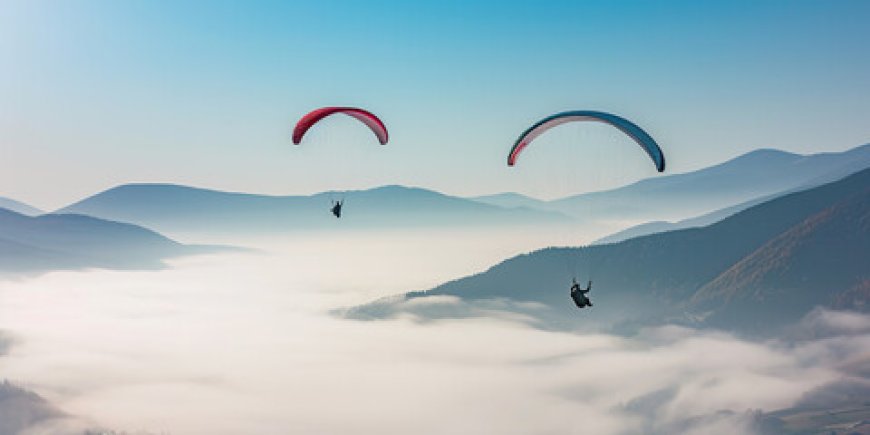Himalayan Bliss Awaits: Uncover Shimla and Manali’s Timeless Allure

Nestled in the picturesque landscape of Himachal Pradesh, Shimla and Manali have long captured the hearts of travelers, offering the perfect blend of natural splendor, cultural richness, and adventurous escapades. While Shimla’s charm lies in its colonial heritage and serene pine-covered hills, Manali embodies a more rustic allure, with lush valleys and adventure-packed landscapes. Both hill stations provide an escape into the lap of nature, yet each has a distinct personality that sets it apart.
Shimla: The Queen of Hills
Shimla’s legacy as the former summer capital of British India is evident in its architecture, social vibe, and historical landmarks. This quintessential hill station, located at an altitude of 7,000 feet, continues to exude colonial charm and elegance.
Colonial Landmarks and Historic Charm
Strolling through Shimla’s Mall Road feels like stepping back in time. This iconic pedestrian street, lined with quaint shops, cafes, and colonial-era buildings, showcases the unique fusion of British architecture with local touches. Shops selling woolen handicrafts, jewelry, and Himachali souvenirs invite travelers to take home a piece of Shimla’s artisanal beauty.
Another highlight is The Ridge, an open promenade at the heart of Shimla, offering a 360-degree view of the surrounding mountains. Dominating the Ridge is Christ Church, a remarkable Gothic-style building built in 1857 and the second oldest church in North India. The stained-glass windows and clock tower are a testament to its British heritage, standing as a peaceful, contemplative space amidst the town’s lively atmosphere.
Viceregal Lodge, also known as Rashtrapati Niwas, adds historical depth to Shimla’s scenic allure. Once the summer residence of British viceroys, this grand structure with its Scottish baronial architecture now functions as a research institute. A guided tour reveals fascinating stories of India’s colonial past and Independence-era events, making it a cultural landmark that’s both visually striking and historically significant.
Natural Beauty and Outdoor Escapes
Shimla’s landscape is dotted with dense forests, offering visitors an immersive experience in the lap of nature. Jakhoo Hill, Shimla’s highest point, offers one of the best panoramic views of the Shivalik ranges. Here, Jakhoo Temple—dedicated to the Hindu god Hanuman—stands with its towering Hanuman statue, a landmark visible from much of the town. This hilltop temple is a serene spot where visitors can relax, meditate, or simply enjoy the view after a scenic trek through lush forests.
Nature lovers will also appreciate Glen Forest, a hidden gem known for its peaceful walking trails and cascading waterfalls. The forest provides an ideal retreat from the town’s bustling streets, offering a sanctuary of quiet beauty where visitors can reconnect with nature.
Beyond Shimla: Kufri and Chail
A short drive away, Kufri and Chail offer tranquil getaways filled with activities and natural beauty. Kufri is known for its snow sports during winter, attracting skiers and snowboarders. It’s also popular for hiking, with the trail up to Mahasu Peak offering breathtaking views of the surrounding landscape.
Chail, a lesser-known hill station, is famous for the Chail Wildlife Sanctuary, home to a variety of Himalayan wildlife. Chail also boasts the world’s highest cricket ground, a unique spot that reflects the town’s history and adds a quirky touch to its appeal.
Manali: The Gateway to Adventure
Manali, situated around 250 kilometers from Shimla, is surrounded by the towering peaks and lush valleys of the Kullu Valley. Known for its adventure sports, spiritual landmarks, and scenic beauty, Manali draws travelers of all kinds—whether they seek an adrenaline rush or a peaceful escape into nature.
Old Manali: A Peaceful Haven
Old Manali offers a contrasting charm to the newer parts of town. With its narrow lanes, wooden houses, and blooming apple orchards, this part of Manali retains a traditional feel. Hadimba Temple, dedicated to Hadimba Devi from the epic Mahabharata, stands here as a timeless reminder of local spiritual beliefs. Built in 1553, its unique architecture, with a pagoda-like roof and intricate wooden carvings, sets it apart from other temples in the region. Surrounded by cedar forests, the temple has an aura of mystery and tranquility, making it a peaceful sanctuary amidst nature.
Nearby, Vashisht Village is another essential stop. Known for its hot springs and ancient temple, Vashisht offers a therapeutic break for visitors, with warm mineral-rich waters that are believed to have healing properties. The modest village ambiance, friendly locals, and serene surroundings create a place of relaxation and simplicity.
Adventure Awaits in Solang Valley
For those seeking thrills, Solang Valley is a must-visit. Just a short distance from Manali, the valley is famous for winter sports like skiing and snowboarding, while summer brings opportunities for paragliding, zorbing, and trekking. The valley’s stunning landscape and open skies provide the perfect backdrop for these activities, and a ride on the Solang Cable Car offers breathtaking views of the surrounding valley.
Paragliding in Solang Valley is particularly popular, giving visitors an exhilarating way to experience the beauty of Manali from above. The unique combination of adrenaline and natural splendor makes Solang Valley a key attraction for adventure-seekers visiting Manali.
The Rohtang Pass: A High-Altitude Spectacle
For those craving an even more rugged experience, Rohtang Pass lies about 51 kilometers from Manali, offering one of the most dramatic landscapes in the region. Sitting at over 13,000 feet, Rohtang Pass is open only a few months each year and provides travelers with an awe-inspiring view of the Himalayas. Covered in snow much of the year, Rohtang attracts photographers, trekkers, and anyone looking to experience the raw beauty of the mountains. It’s important to check weather conditions before visiting, as the pass can be unpredictable due to heavy snowfall and changing weather.
Culture and Cuisine: Savoring the Flavors of Himachal Pradesh
Shimla and Manali aren’t just visual feasts; they also offer a rich culinary and cultural experience. The Himachali people are known for their warmth and hospitality, which is evident in the traditional cuisine, festivals, and handicrafts of the region.
Local Cuisine
Himachali cuisine is hearty and flavorful, making use of locally-sourced ingredients. Siddu, a steamed bread filled with poppy seeds or spiced lentils, is a popular dish, often served with ghee or butter. Another local specialty, chana madra, is a yogurt-based chickpea curry with a unique tangy flavor, typically enjoyed with rice. Many cafes in Shimla and Manali serve these local dishes alongside other North Indian and international options, allowing travelers to explore the region’s culinary diversity.
In Manali, dham is a traditional meal served during festivals and special occasions, prepared by Brahmin chefs and enjoyed in a communal setting. This elaborate vegetarian meal includes rice, lentils, and a variety of curries, highlighting the region’s flavors and fostering a sense of community.
Craft and Souvenirs
Shimla’s Lakkar Bazaar and Manali’s markets are perfect for picking up traditional handicrafts and souvenirs. Items like pashmina shawls, woolen clothing, and Kullu caps showcase the local artisans’ craftsmanship and are beloved by tourists. Hand-carved wooden artifacts are also a favorite, embodying the cultural legacy and artistic skills of the region.
Choosing the Right Season
The best time to visit Shimla and Manali depends on what travelers seek. Summer (March to June) offers pleasant weather ideal for sightseeing and outdoor activities. Winter (October to February), with its blanket of snow, is perfect for those seeking snow sports and a fairytale winter landscape. Although monsoon season (July to September) brings heavy rains and the occasional risk of landslides, it also reveals a lush, green side to the mountains that some travelers find enchanting.
The Timeless Appeal of Shimla and Manali
Shimla and Manali, each with their own charm, offer a memorable escape into the Himalayas. Shimla’s colonial elegance and vibrant markets balance beautifully with Manali’s rustic allure and adventure offerings. From spiritual temples and natural beauty to thrilling sports and rich local culture, a journey to these hill stations leaves a lasting impression of India’s stunning Himalayan landscape and heritage. Whether you’re in search of tranquility, history, or adventure, Shimla and Manali promise an unforgettable experience.
What's Your Reaction?


























